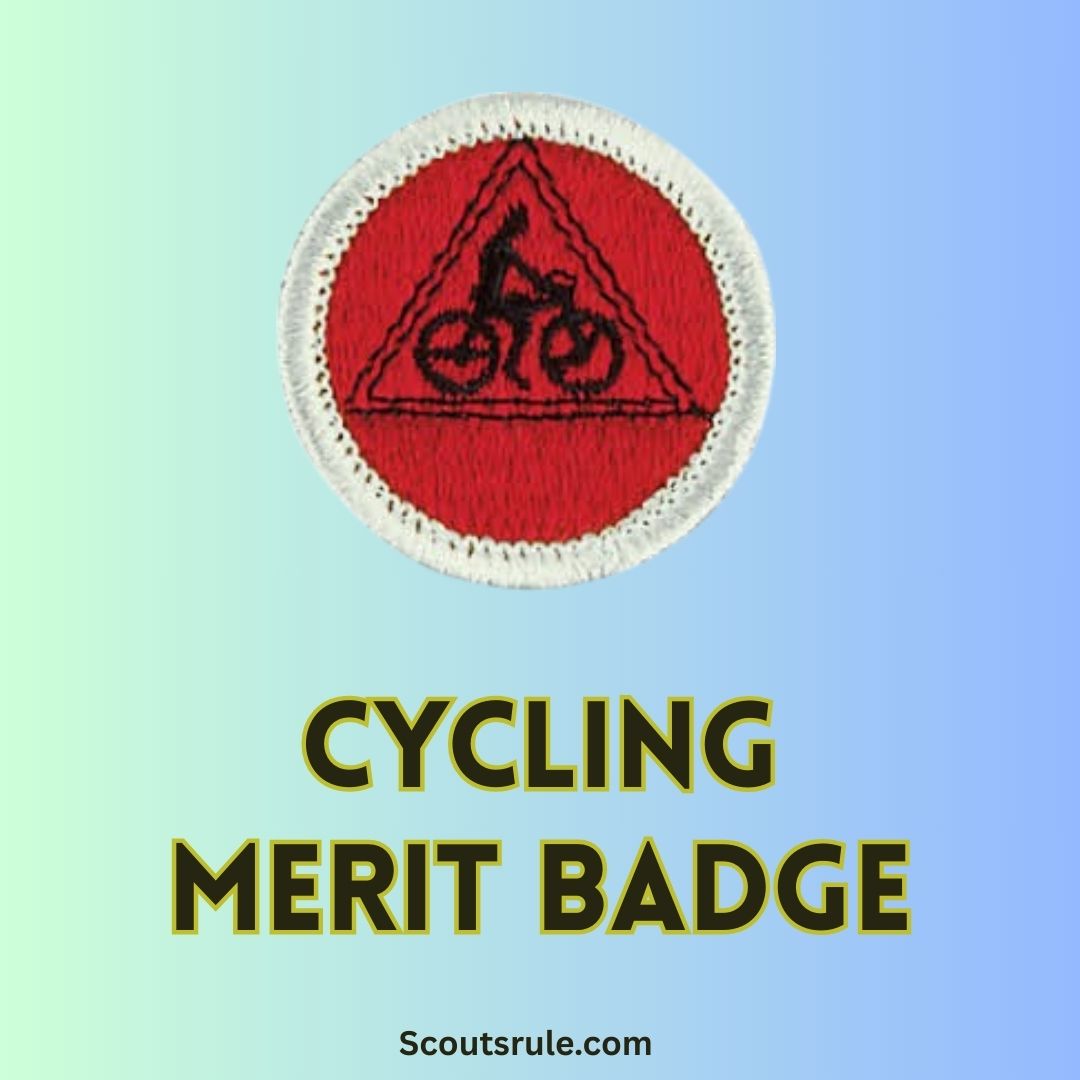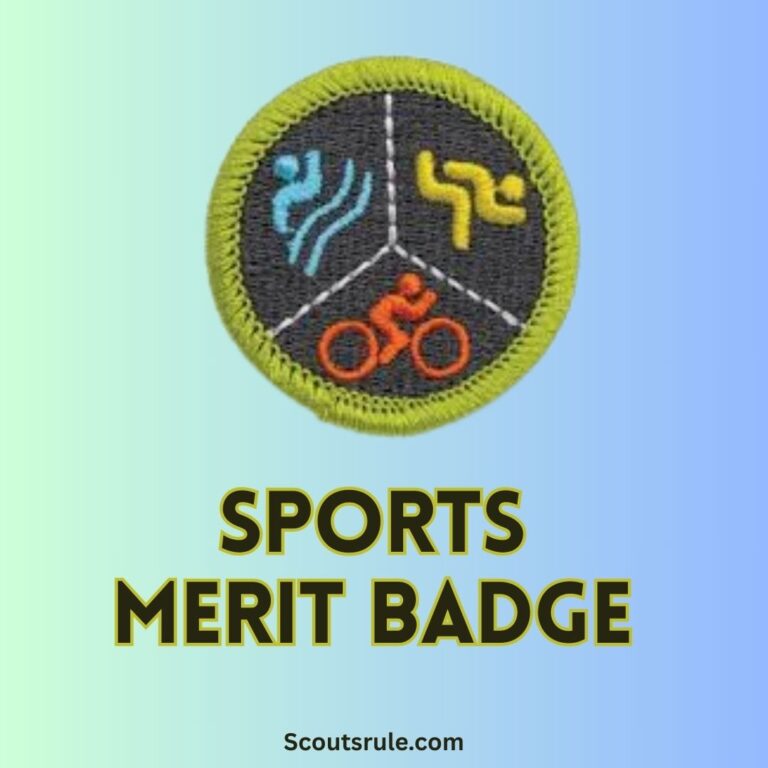
Cycling is more than a means of transportation—it’s an excellent form of exercise, an environmentally friendly option, and a valuable skill that every Scout should master. The Cycling Merit Badge is an Eagle-required badge that challenges you to gain a wide range of skills, from understanding bicycle maintenance and road safety to navigating various terrains and complying with traffic laws. In addition to building your technical competencies as a cyclist, this badge teaches responsibility, discipline, and the importance of personal safety while on the road. With this guide in hand, you’ll explore the requirements in depth, learn practical tips for every stage of your journey, and ultimately become a safe, competent cyclist.
Post Contents
- 1. Overview of the Cycling Merit Badge Requirements
- 2. Recognizing and Managing Hazards in Cycling
- 3. First Aid Knowledge for Cycling Injuries
- 4. Bicycle Maintenance and Repairs
- 5. Understanding Traffic Laws and Cycling Safety Guidelines
- 6. Demonstrating Riding Skills and Ride Reports
- 7. Environmental and Health Benefits of Cycling
- 8. Additional Tips for Success
- 9. Preparing for Your Final Evaluation
- Part I: Cycling and First Aid
- Part II: BSA Bike Safety Guidelines
- Beyond the Badge: Lifelong Cycling and Community Impact
- Conclusion
1. Overview of the Cycling Merit Badge Requirements
The Cycling Merit Badge is designed to test both your practical cycling skills and your theoretical knowledge about bicycle safety, maintenance, and traffic laws. Some of the key requirements include:
- Hazard Identification and Safety Measures:
Explain to your counselor the most likely hazards encountered while cycling and how to prevent, mitigate, or respond to these dangers. - First Aid for Cycling Injuries:
Show that you are knowledgeable in treating common cycling injuries such as cuts, abrasions, blisters, heat exhaustion, dehydration, and even injuries from insect stings or snakebites. You must also be able to identify poisonous plants and animals in your area. - Bicycle Inspection and Maintenance:
Demonstrate your knowledge of how a bicycle works, including: - Points on your bicycle that need regular oiling.
- Critical safety checks (brakes, seat adjustments, steering tube, etc.).
- How to adjust components like brakes, seat level and height, and steering.
- How to safely repair a flat tire by removing the tire, patching or replacing the tube, and remounting the tire.
- Understanding Traffic Laws and Bicycle Safety Guidelines:
Explain your state’s traffic laws for bicycles and compare them to motor vehicle laws. Learn and follow bicycle‑safety guidelines along with familiarity with the BSA buddy system while riding. - Riding Skills and Ride Reports:
Depending on your option (road biking or mountain biking), you must demonstrate specific riding skills such as mounting, pedaling, braking (with both foot and hand brakes), executing proper turns, and safely riding along curbs and road edges. You will also complete ride reports that document rides of predetermined distances (for example, two rides of 10 miles, two rides of 15 miles, and two rides of 25 miles). - Route Planning and Organized Bike Tours:
You must design a safe 50‑mile trip on a road map or participate in an organized bike tour that covers at least 50 miles. This project assesses your route‑planning skills, time management, and ability to navigate without major highways.
The badge requirements are as much about knowledge as they are about hands‑on ability. You are encouraged to answer questions in your own words, do further research, and demonstrate your personal experience with cycling.
2. Recognizing and Managing Hazards in Cycling
Cycling, like any physical activity, involves potential hazards. The first part of the badge requires you to explain these hazards to your counselor. Key hazards include:
2.1 Hazard Identification
- Road Hazards:
These include uneven pavement, construction zones, potholes, and sudden obstacles. Bicyclists must always be aware of their surroundings. - Traffic Hazards:
Unlike motor vehicles, bicycles may be less visible. Interactions with cars, trucks, and pedestrians require extra caution. Understand how to be visible (with lights, reflective gear, and hand signals) and adhere to traffic laws. - Natural Hazards:
Loose gravel, wet leaves, and inclement weather can reduce traction, making falls more likely. - Mechanical Hazards:
A poorly maintained bike may have issues with brakes, tires, or the drivetrain that can lead to accidents.
2.2 Prevention and Mitigation Strategies
- Preparation:
Before each ride, inspect your bike to ensure all parts are in good working order. Check tire pressure, brake function, and oiling points regularly. - Protective Gear:
Always wear a helmet, gloves, and appropriate clothing. Visibility is key; use lights and reflective gear when riding at night or in low‑visibility conditions. - Route Planning:
Choose safer routes that have dedicated bike lanes or less traffic. Learn to predict and avoid hazards by staying informed about the local driving environment. - Behavior:
Maintain a safe speed, use hand signals, and adhere to local traffic laws to reduce risks on the road.
For your merit badge, prepare a detailed explanation of the most likely hazards you may encounter and describe the methods you would use to anticipate, prevent, and respond to them. This demonstrates not only your awareness but your readiness to cycle safely.
3. First Aid Knowledge for Cycling Injuries
Accidents can occur even when all precautions are taken, making first aid an essential skill for any cyclist. The Cycling Merit Badge requires you to demonstrate knowledge of first‑aid responses for a range of cycling injuries.
3.1 Common Injuries and Treatments
- Cuts and Abrasions:
Learn to clean wounds, control bleeding with a clean cloth, and cover cuts using sterile bandages. Understand when to seek medical attention. - Blisters:
Prevent and treat blisters by properly fitting shoes and socks, and using blister pads or bandages to protect and cushion affected areas. - Heat Exhaustion and Dehydration:
Recognize signs such as dizziness, muscle cramps, and fatigue. Always have water available, and know to stop cycling in extreme conditions. - Sunburn:
Use sunscreen and wear protective gear like caps or visors. Understand that sunburn can lead to more severe skin issues if neglected. - Insect Stings and Tick Bites:
Identify local poisonous animals and stinging insects. Knowing how to treat a sting (by applying cold packs and antihistamines) and checking for tick bites is crucial to avoid complications. - Snakebite:
Although rare, be aware of snakebite procedures in areas where venomous snakes may be present. Stay calm, immobilize the affected area, and seek immediate medical attention.
3.2 Practical Application
In your project, you must clearly explain to your counselor the first‑aid measures for each type of injury. You may even demonstrate bandaging techniques and simulate treatment scenarios using a first‑aid kit. This not only shows theoretical understanding but also practical readiness.
4. Bicycle Maintenance and Repairs
Maintaining your bicycle is crucial to ensure your safety while riding. Under the badge requirements, you must show that you understand how a bicycle works and can perform essential maintenance tasks.
4.1 Regular Maintenance
- Oiling and Lubrication:
Identify the parts of your bike (chain, derailleurs, pedals) that require regular oiling. Show your counselor the process of applying oil evenly, cleaning off excess, and checking for wear. - Brake Adjustments:
Demonstrate how to adjust both foot and hand brakes. Learn the proper procedures for testing brake responsiveness and ensuring that the brakes can bring the bike to a safe stop. - Seat and Steering Adjustments:
Explain how to adjust the seat height and angle to optimize comfort and safety. Show how to adjust the steering tube and ensure the handlebars are correctly aligned. - Flat Tire Repair:
Walk through the entire process of repairing a flat tire. This includes removing the tire from the rim, locating and patching the puncture or replacing the inner tube, and remounting the tire securely.
4.2 Maintenance Verification
Your merit badge requires that you show your bicycle to your counselor for inspection. Highlight the following:
- Points Needing Regular Attention:
Explain which parts need oiling regularly and make a checklist. - Brake and Safety Checks:
Demonstrate how you check your brakes, seat, and steering for safety before every ride.
Document these procedures with photos, diagrams, or video recordings, and prepare to discuss each step during your review.
5. Understanding Traffic Laws and Cycling Safety Guidelines
A critical component of the badge is understanding and adhering to the laws of the road. This includes not only state-specific traffic regulations for bicycles but also general safety guidelines.
5.1 Local and State Laws
- Research Your State’s Bicycle Laws:
Find out your state’s legal requirements regarding bicycle usage (use of helmets, required reflectors, designated bike routes). - Comparison with Motor-Vehicle Laws:
Explain the differences between how bicycle traffic is regulated compared to motor vehicles and why these differences matter.
5.2 Bicycle Safety Guidelines
- Hand Signals:
Learn and demonstrate proper hand signal usage for stopping, turning left, and turning right. - Helmet and Protective Gear:
Always wear a helmet and consider additional protective gear. - Buddy System:
Stick to the BSA buddy system, ensuring you ride with one or more partners for added safety. - Visibility:
Use lights, reflective clothing, and a properly functioning bell or horn to alert other road users.
By understanding the specifics of your locale’s laws and the rationale behind safety guidelines, you can better advocate for safe cycling practices and be a positive example for your troop.
6. Demonstrating Riding Skills and Ride Reports
Practical riding skills are at the heart of the Cycling Merit Badge. You will need to demonstrate competence on the road, along with a keen understanding of safe maneuvering techniques.
6.1 Road or Mountain Biking Options
Depending on your local council guidelines, you may have the option to choose between road biking or mountain biking. For road biking:
- Skill Demonstrations:
- Mounting, pedaling, and braking, including performing emergency stops.
- Executing safe left and right turns—a left turn from the center of a street and a right-turn-only lane scenario.
- Riding along a row of parked cars safely by maintaining an appropriate distance, and handling curves and rail-road crossings.
- Ride Distance Requirements:
Complete rides that include: - Two rides of 10 miles each,
- Two rides of 15 miles each, and
- Two rides of 25 miles each.
After these rides, you will need to document the date, route, and any interesting details observed along the way.
6.2 Route Planning and Organized Rides
- Mapping a 50‑Mile Route:
You must either plan a 50‑mile route that avoids main highways or participate in an organized bike tour of at least 50 miles. - Time Management:
Create a timeline for your route that ensures you complete the ride within eight hours while incorporating safe riding practices and planned stops.
Use maps, spreadsheets, or detailed reports that show your route, timing, and observations. This documentation demonstrates your ability to plan long, safe rides and manage time appropriately on the road.
7. Environmental and Health Benefits of Cycling
Cycling is not just about earning a merit badge—it has significant benefits that extend into everyday life.
7.1 Health Benefits
- Cardiovascular Fitness:
Cycling is an excellent aerobic exercise that strengthens the heart and improves lung capacity. - Muscle Strength and Endurance:
Regular cycling builds strength in the legs, core, and lower back. - Mental Health:
Cycling can reduce stress, improve mood, and enhance overall well-being.
7.2 Environmental Benefits
- Reduced Carbon Footprint:
Cycling is an eco-friendly alternative to driving, reducing greenhouse gas emissions and air pollution. - Sustainable Transportation:
By choosing to cycle, you contribute to a more sustainable community, encouraging healthier lifestyles and more environmentally responsible commuting options.
These benefits are valuable talking points when discussing your motivations for learning and promoting cycling with your counselor and troop.
8. Additional Tips for Success
Here are some practical tips to ensure you complete your Cycling Merit Badge with confidence:
- Practice Regularly:
Consistency is key. Regular practice sessions will help you build the stamina and skill required for longer rides and ensure that your techniques are polished. - Seek Feedback:
Don’t hesitate to ask for tips from experienced cyclists, your Scout leaders, or local biking groups. Constructive feedback can help you fix minor issues before they turn into big problems. - Record Your Progress:
Keep a detailed log or journal of your rides, maintenance checks, and any challenges you encounter. Photograph or video record your practice sessions if possible. - Safety First:
Always prioritize safety over performance. Wear protective gear, check your bicycle before each ride, and follow all local laws and guidelines. - Stay Informed:
Make an effort to learn about new cycling technologies, updates in traffic laws, and improvements in bicycle safety. Continuous learning is a great way to maintain interest and competence.
9. Preparing for Your Final Evaluation
Before your final meeting with your merit badge counselor, ensure you have compiled all necessary documents and practiced your skills:
- Compile Documentation:
Organize your ride logs, maps, photos, and maintenance check records. - Review the Requirements:
Go over each requirement—from hazard awareness and first‑aid knowledge to maintenance demonstrations and ride reports—in your own words. - Practice Presentations:
Be ready to explain your riding techniques, maintenance routines, and your understanding of traffic laws to your counselor. - Mock Evaluations:
Consider having a final practice session or mock evaluation with a trusted adult acting as your counselor.
Thorough preparation helps ensure that you meet every requirement confidently and are truly prepared to become a responsible, skilled cyclist.
Part I: Cycling and First Aid
Cycling, like many sports, can sometimes result in minor injuries or health issues. Knowing how to identify, prevent, and treat these injuries is vital for both your safety and that of those around you. Be prepared to explain or demonstrate first‑aid responses for common cycling injuries as part of your merit badge requirements.
1. Cuts and Scrapes
- Overview: Minor cuts and scrapes are common when you fall or brush against rough surfaces.
- Prevention: Always wear proper cycling clothing and gloves. Be cautious when maneuvering near obstacles.
- First‑Aid: Clean the wound with soap and water, apply a sterile dressing or bandage, and monitor for signs of infection. If the cut is deeper or bleeding persists, seek professional help.
2. Sunburn
- Overview: Extended exposure to the sun, especially during long rides, can cause painful sunburns.
- Prevention: Wear UV‑protective clothing and a hat, apply waterproof sunscreen with an appropriate SPF, and reapply as needed (particularly on longer rides).
- First‑Aid: Cool the burn with cool (not cold) water, use aloe vera or after‑sun lotion to moisturize, and stay hydrated.
3. Hypothermia
- Overview: When cycling in cold weather or over extended periods in chilly conditions, your body’s temperature can drop dangerously.
- Prevention: Dress in layers, wear moisture‑wicking and insulated clothing, and limit exposure by planning shorter rides in cold weather.
- First‑Aid: Move to a warm environment, remove wet clothing, and wrap up in dry, warm items. If mild hypothermia is suspected, drink warm fluids; severe cases require immediate medical attention.
4. Frostbite
- Overview: Frostbite occurs when skin and underlying tissues freeze, usually affecting fingers, toes, ears, and the nose.
- Prevention: Wear insulated gloves and thermal clothing; avoid prolonged exposure in freezing temperatures.
- First‑Aid: Slowly warm the affected area using warm (not hot) water and do not rub the frostbitten area (to avoid further tissue damage). Seek medical help if there is severe exposure.
5. Dehydration
- Overview: Cycling, especially in warm or extended conditions, can lead to dehydration if fluids are not replenished.
- Prevention: Carry adequate water or electrolyte beverages. Drink at regular intervals, even if you do not feel thirsty.
- First‑Aid: Stop riding, rest in a shaded area, and rehydrate gradually. In severe cases, medical attention may be necessary.
6. Heat Exhaustion
- Overview: Heat exhaustion can occur when the body overheats due to prolonged physical exertion in high temperatures.
- Prevention: Ride during cooler parts of the day, wear light clothing, and ensure proper hydration.
- First‑Aid: Move to a cool area, rest, remove excess clothing, and rehydrate. If symptoms persist or worsen, seek medical help as heat exhaustion may progress to heatstroke.
7. Heatstroke
- Overview: Heatstroke is a severe, life-threatening condition where the body’s core temperature rises uncontrollably.
- Prevention: Similar to preventing heat exhaustion—plan rides during cooler times, keep hydrating, and take sufficient rest.
- First‑Aid: Immediately move the injured person to a cool, shaded area, call emergency services, and cool the body gradually using water and ice packs. Heatstroke requires urgent medical intervention.
8. Blisters
- Overview: Blisters can form on your hands and feet due to friction while riding.
- Prevention: Ensure your gloves and shoes fit well, use padded cycling gear, and lubricate or tape areas prone to rubbing.
- First‑Aid: Clean the blister, protect it with a bandage or blister pad, and avoid popping it if possible. If a blister bursts, clean the area and cover it to prevent infection.
9. Bites and Stings
- Overview: While cycling outdoors, you might encounter insect bites or stings (e.g., from bees, wasps, or mosquitoes).
- Prevention: Use insect repellent and wear long-sleeved, breathable clothing when necessary.
- First‑Aid: Remove the stinger (if applicable), clean the area, and apply a cold compress to reduce swelling. For allergic reactions, administer antihistamines or an epinephrine injection (if prescribed) and seek medical help if symptoms are severe.
Part II: BSA Bike Safety Guidelines
The BSA Bike Safety Guidelines provide a framework to help you ride safely and responsibly. These guidelines not only protect you but also create a safer environment for all road users. Here are the 13 crucial guidelines:
1. Qualified Supervision
- Explanation: Always have an experienced adult or a lifeguard-like supervisor when practicing in a new area or during difficult rides. Supervision ensures safety and proper guidance.
2. Physical Fitness
- Explanation: Maintain a level of physical fitness that allows you to ride comfortably and safely. Good fitness helps reduce the risk of fatigue and injury, especially on long rides.
3. Helmets and Clothing
- Explanation: A well-fitted helmet is mandatory, and wearing appropriate, bright, or reflective clothing increases your visibility. Proper cycling attire also minimizes chafing and injuries.
4. Buddy System
- Explanation: Ride with a buddy or in a group so that assistance is available if one of you encounters problems. This system enhances safety on and off the road.
5. Position in Traffic
- Explanation: Always ride in a position that maximizes visibility to motorists. Stay as far to the right as safely possible while ensuring you’re visible in your lane.
6. Safety Rules
- Explanation: Follow all established cycling and traffic safety rules. Obey traffic signals, stop signs, and other road signs just like motor vehicles do.
7. Turns and Intersections
- Explanation: Use clear hand signals and ensure you have enough time and space to make safe turns at intersections. Understand right-of-way rules and always double-check for vehicles before turning.
8. Equipment
- Explanation: Ensure all your gear and accessories (lights, reflectors, brakes) are in good working order. A well-maintained bike greatly reduces the chance of accidents.
9. Bicycle Accessories
- Explanation: Use additional accessories (e.g., bells, mirrors, and lights) to further enhance your safety. These items help alert motorists and other road users to your presence.
10. Maintenance
- Explanation: Regularly check your bike for mechanical issues—tires, brakes, chain, handlebars, and overall structure. Routine maintenance minimizes the risk of equipment failure during rides.
11. Racing Right
- Explanation: If riding in a group or competitive setting, understand the “racing right” principle. This means that faster riders should safely pass on the left while staying mindful of other riders’ positions.
12. Planning
- Explanation: Always plan your route ahead of time. Consider the distance, traffic patterns, road conditions, and any potential hazards along your chosen path. A well-chosen route improves safety and reduces stress.
13. Discipline
- Explanation: Exercise self-discipline by following the safety rules, adhering to your planned route, and resisting temptations to disregard established protocols. Discipline in cycling ensures not only your safety but that of everyone around you.
Beyond the Badge: Lifelong Cycling and Community Impact
Once you earn the Cycling Merit Badge, remember that these skills and habits can serve you for a lifetime. Beyond the badge:
- Join Cycling Clubs:
Consider joining local or school cycling clubs to continue regular practice and participate in organized rides. - Advocate for Safer Roads:
With your knowledge of traffic laws and cycling safety, you can educate others and support initiatives for better bicycle infrastructure in your community. - Explore Additional Certifications:
Look into advanced riding courses or consider taking up bicycle maintenance certifications, which can translate into savings and potential career opportunities. - Promote Health and Sustainability:
Encourage friends and family to cycle by sharing your experiences. Your efforts not only benefit your health but also contribute to a healthier environment.
The skills you learn through this merit badge can open up new avenues of adventure, teaching you about discipline, responsibility, and the rewards of sustainable transportation.
Conclusion
The Cycling Merit Badge is a comprehensive journey that combines practical skills, safety awareness, maintenance knowledge, and an understanding of traffic laws with the joy of riding. By studying hazards and first‑aid, mastering bicycle maintenance, planning routes, and documenting your rides, you not only earn your badge but also build a foundation for a lifetime of responsible, enjoyable cycling. Embrace every ride as an opportunity for growth, safety, and community impact, and ride forward with confidence and purpose.
Happy cycling, and may every journey on your bike bring you closer to mastery and environmental responsibility!

Hi, Robin here, A former lead Scout and here I share my inspiring stories about USA Scouts, leadership, adventure, how to guides and more.






